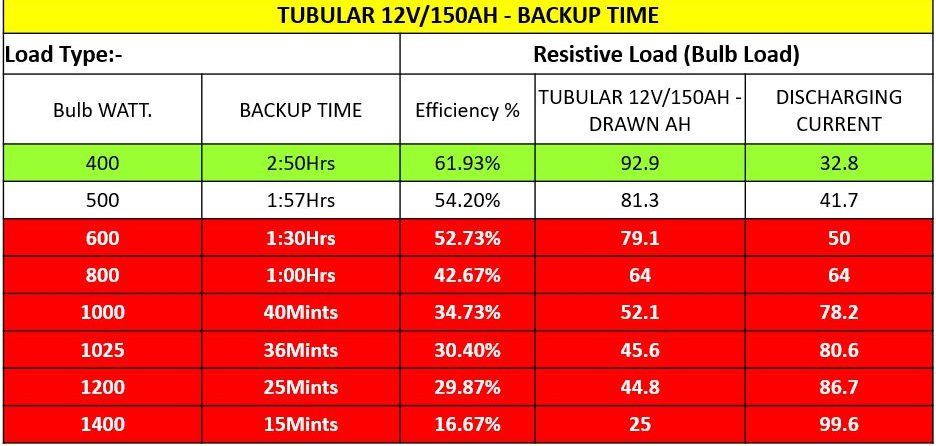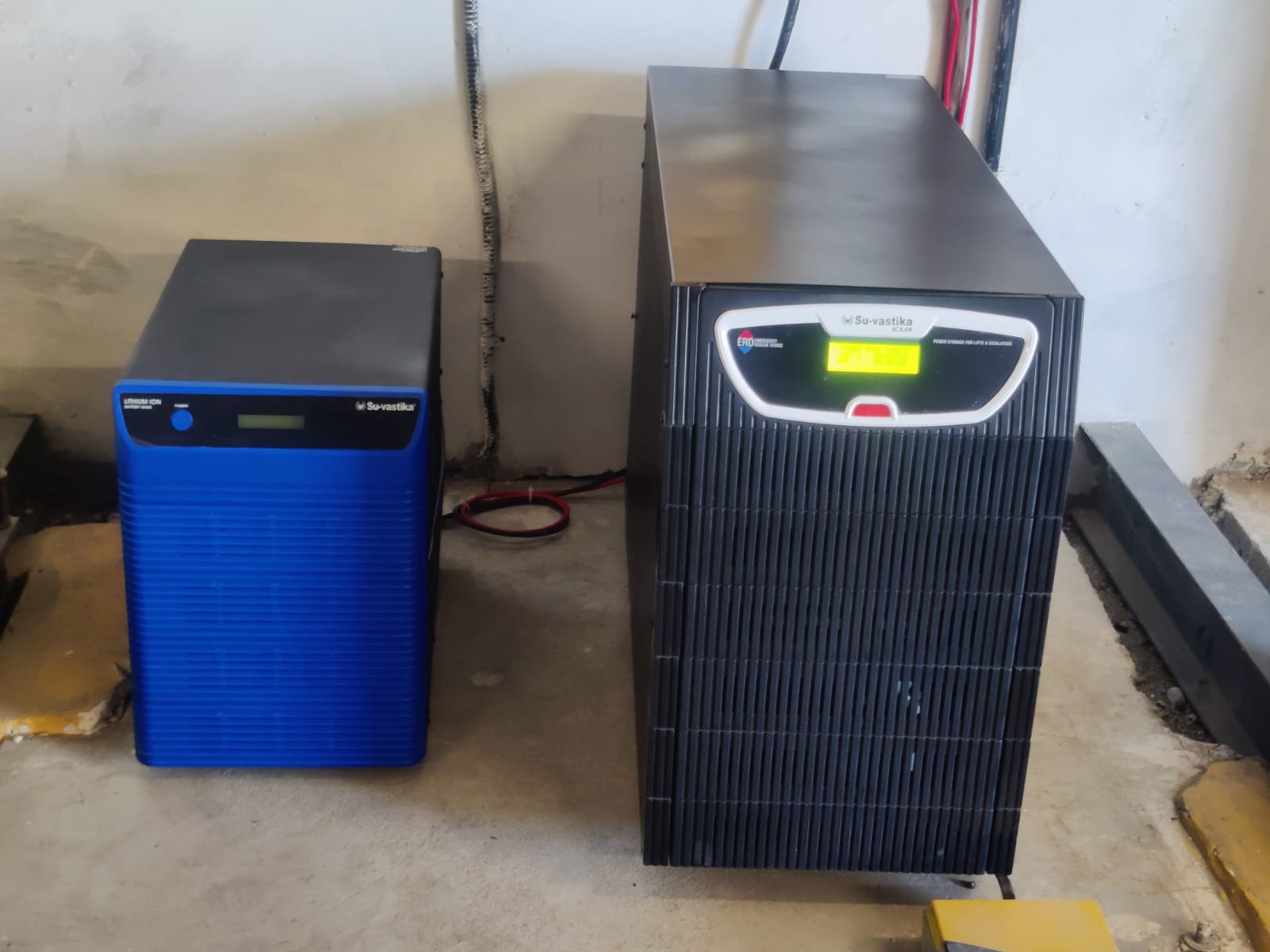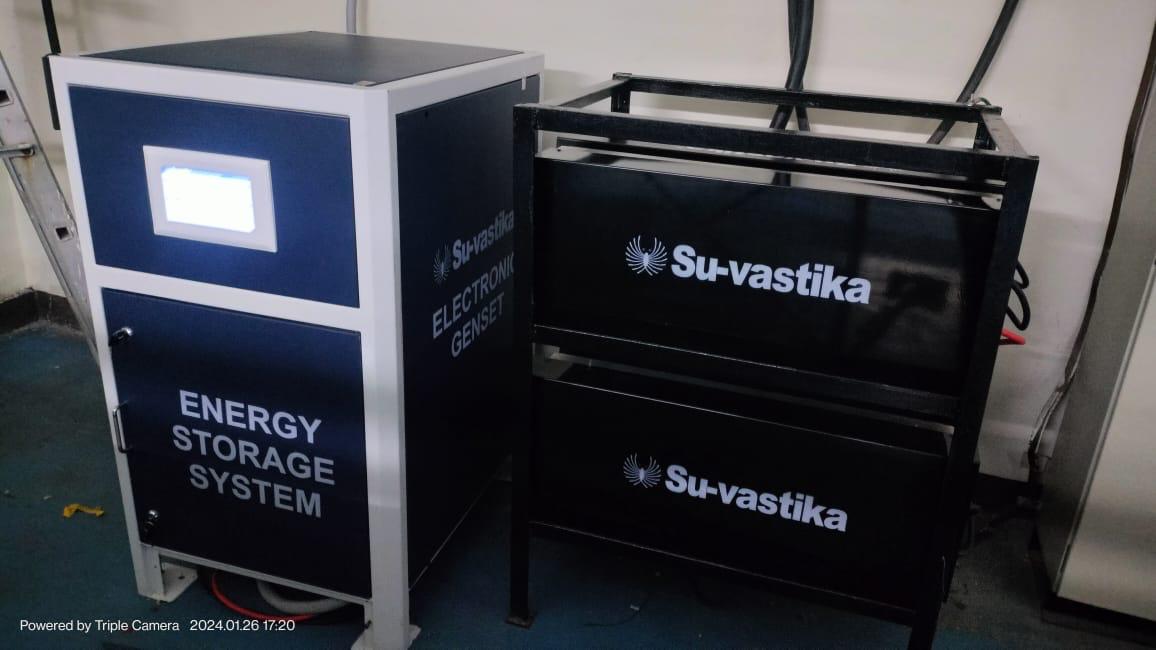
The difference between C20 and C10 batteries in Tubular batteries is very simple to understand. When we talk of C rating, whether C10 or C20, that denotes the capacity of the battery, whereas, in the Inverter and solar Industry, there is a rumour that a C20 battery is for Inverter/UPS and a C10 battery is for solar applications. I’m amazed that the whole industry talks of capacity as the charging capacity. You meet anyone from the industry who will say the solar battery can be charged faster but cannot explain that even properly. So C20 and C10 is the concept in Tubular lead Acid battery where if we have to check the actual capacity, then for a 150 Ah battery, we need to discharge 7.5Amp from the battery after charging it completely. If it works for 20 hours, it has the capacity of a C20 battery. For the C10 battery, if we discharge the 150 Ah battery at 10 Amps, what is the timing if we get 10 hours back up? results with you. Is the C10 battery.. this is the theory behind the C20 and C10 batteries in the case of the Tubular battery. So we tested different batteries on different currents by using bulb loads on the different inverters available in the market. Now we are sharing those.
So let us understand in this blog what C20 is: the capacity defined by any manufacturer that the battery will give 20 hours of backup time if we load the battery with a defined load. So let us take an example if we have the 150 Ah battery of C20, then it means that if we draw 7.5Amp current from the 150 Ah battery, it should give 20 hours of backup time. So this is the battery standard manufacturer is trying to tell us. But if we draw 7.5Amp from any Tubular battery, do we get 20 hours nowadays? It is a big question mark. No manufacturer can prove that if we draw 7.5 Amp current from his 150 Ah battery, it should give 20 hours of backup. The Inverter has its efficiency, and if we check the backup at any inverter, we will not get the 20 hours back up. So if we increase the discharge current to 15 Amps, we should get 10 hours back up of 10 hours, but the manufacturer has made a C10 battery which is also insufficient for Inverter or Solar Industry. I explain further that a 500 Watt load on any inverter is drawing how much current, so 500 divided by 12 equals 42 Amps. So what’s the backup time for 42Amps load, which no company tells you whether the C20 battery or C10 battery?https://naturalenergyhub.com/solar-energy/differences-c10-c20-rated-solar-batteries/
So today, I will tell you that there is no such formula to calculate the Load and backup time as all these formulas people have been using so far do not stand anywhere as the technology keeps on degrading, and nowadays, who is selling which Ah battery is anyone’s guess. But today, I will give you a formula by which you can easily test the battery at your shop or showroom and see whether the manufacturer is giving you the right or the wrong capacity battery. The Price of a tubular battery C20 and a Tubular battery C10 has a 15% to 20% difference.
This is the backup time chart of the C20 Tubular battery, which we have prepared after testing various tubular batteries available in the Indian market. Any dealer can test this backup time on the Inverter available in your showroom. Take an Inverter/UPS of any brand, charge the 150 Ah battery, and select the Inverter which can take a load of 1200 Watt on a single battery. Then get six bulbs of 200 watts, charge the battery completely, and then discharge the 1200-watt bulb load on the Inverter/UPS you selected, and you will get less than 25 minutes of backup time. This way, you can test the quality of your Tubular Lead Acid battery and whether the manufacturer has given you a good-quality or bad-quality battery. When the battery comes back after working for two years, you will realize the backup time left testing on the same test, which is easy to perform as it takes 25 minutes to finish this test. Suppose one has to see the quality of the 150Ah Tubular battery. In that case, whether on C20 or C10, the battery should be tested on 1200 att load, and if the backup is more than 30 minutes, then that battery is a C10 battery, and if we get less than 25 minutes, then that battery is also not C20 battery.
We should make a thumb rule for testing any battery of any make.https://suvastika.com/12volt-tubular-battery-inverter-system-and-advantages-and-disadvantages/



Compared to Tubular C20 and C10, the Lithium battery with LifePO4-based chemistry has C1 capacity. This is a major difference between the Tubular and Lithium batteries. So Tubular battery can not compare with the Lithium battery as the C10 battery is sold for the Solar industry, which is doubtful as C10 is also insufficient for higher loads. So for Higher loads, the only solution is a Lithium battery only. As it has the C1 capacity, you can load it at any percentage of the load. The capacity will not shift. The industry will shift from Tubular to Lithium in the next five years once people realize the strength of Lithium batteries.https://suvastika.com/lithium-battery-is-cheaper-than-tubular-battery-in-ups-inverter-usage/






